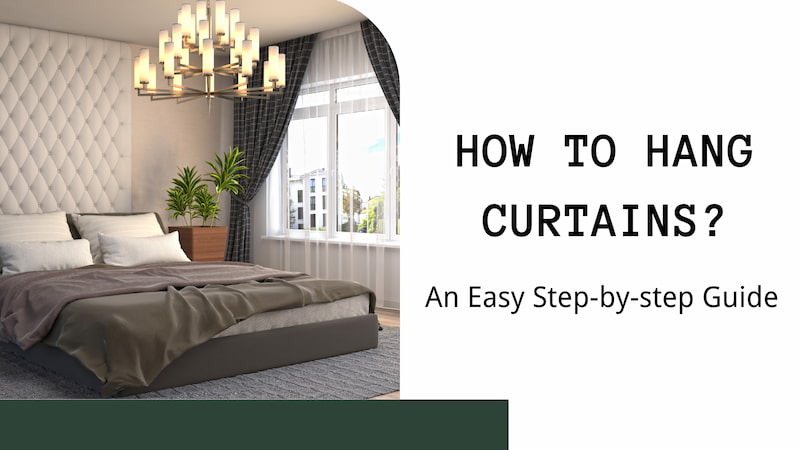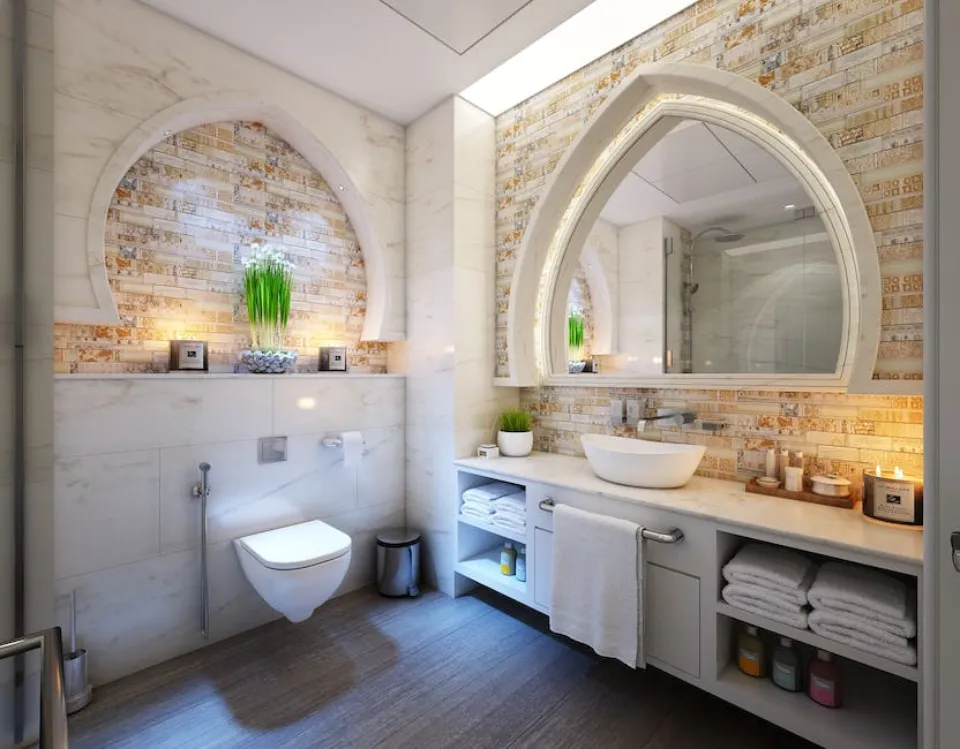In living rooms and bedrooms, curtains are a necessity. Learn how to hang curtains properly with our simple step-by-step instructions.
You need to take a measurement, determine size and style, choose rods and hardware, install brackets, mount curtains/drapes on rods, hang curtains/drapes, and install tiebacks (optional).
Please read on for more detailed information.
Things You Should Know
- To select the ideal curtains, measure the length and width of your window.
- In case you can’t find a stud, use wall anchors to secure the curtain rod brackets to your wall.
- The curtain rod should be balanced on your brackets after you slide your curtain onto it.
- For curtains that are too long, hem them.
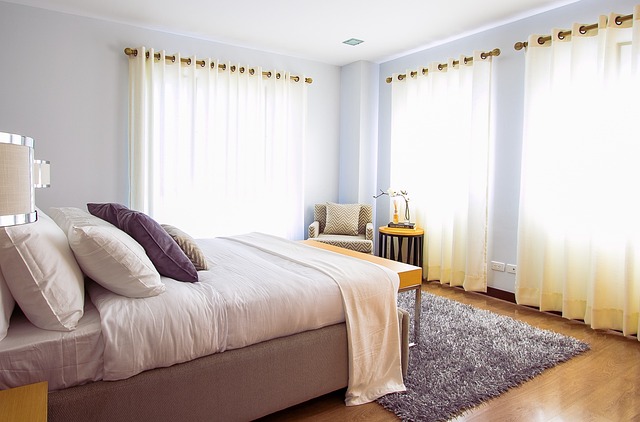
How to Hang Curtains?
Here’s a quick overview of how curtains and draperies can be hung:
Measure
You have some measuring to do before you even think about purchasing your new curtains!
So locate your measuring tape immediately because you must complete this step!
You are going to be measuring BEFORE buying your curtains for three super important reasons:
- You need to know how wide a rod you need
- You need to know how wide each curtain panel needs to be
- You need to know how long your curtains need to be
What precisely must be measured?
- From edge to edge, measure the width of your window. You must determine how wide your rod should be based on the width of your window.
- Choose the height at which you want to hang your rod.
- Once more, choose the width of each curtain panel based on the width of your window.
- Measure the length that each curtain panel needs to be based on the height of your rod.
Determine Size and Style
Determine size and style of curtains or drapes: Which window treatment style you select is one of the most crucial decisions. Do you desire formal drapes that reach all the way to the floor and go far past the windows on either side? Or do you want casual cafe curtains that only just barely hide the windows? Do you desire sheer curtains that let in a lot of light? Or thick, light-blocking curtains that, when drawn shut, keep a bedroom in peaceful darkness? If you want custom draperies, order them right away because it can take a few weeks for them to be made and delivered.
Choose Rods and Hardware
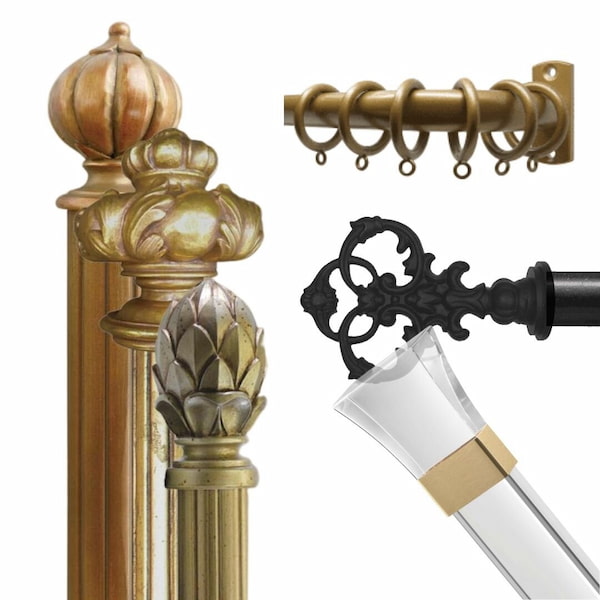
Your window treatment hardware will be determined by the measurements (step 1) and the style factors (step 2). Hardware can range from simple thin rods resting on almost invisible brackets screwed to the window frame to elaborate ornament rods and brackets with decorative finials adorning the ends of the rods. The style you select largely depends on the aesthetics you’ve selected for your window treatments.
Install Brackets
Beginning with accurate measurements and mounting the rod brackets to the window frame or wall, you can begin installing your window coverings. This could be said to be the crucial step in the procedure. To complete this step, you’ll need some fundamental carpentry knowledge and equipment, such as the ability to drill pilot holes or mount wall anchors to hold up potentially heavy drapes. While mounting brackets directly to wall studs may be possible, it’s more likely that you will need to use toggle bolts or wall anchors to firmly fasten the brackets to the wall in the gaps between wall studs. The brackets must be mounted precisely, with the correct height above the floor and side-to-side alignment. For the drapery to be functional and durable, the brackets must be installed properly.
Mount Curtains/drapes on Rods
Often, the drapery fabric must be threaded through the rod as the next step. In some cases, drapery hooks must be inserted through the pleats in the top of the drapes.
Hang Curtains/Drapes
Drapes can be lifted into position when they are fastened to a rod or hanger hooks. A helper is typically needed for this, along with possibly one or two stepladders.
Install Tiebacks (Optional)
You may now be required to install tieback cords and hardware if you want to use formal-style draperies. Your drapery installation is finished with this last phase.
The Do’s and Don’ts of Hanging Curtains
The Do’s
- DO Use Enough Fabric
Your curtains should feel thick, not thin. The curtains should be approximately two to 2.5 times the width of the actual window if you intend to occasionally close them.
- DO Hang High
If possible, install your curtain rod higher than the top of your window because this will make the window appear taller. They ought to be 4-6 inches above the window frame, as a general rule.
- DO Choose Appropriate Fabric
Consider the mood of the room and the function of the room when selecting the curtain fabric. Denser fabrics feel more formal and offer more privacy, whereas lighter blends have a more relaxed vibe and filter light. Consider using heavy velvet for drafty windows or linen for a cooler feel in the summer.
- DO Use a Template
With the aid of a straightforward template, you can hang the curtain rods straight and at the same height for each window. One could have measured from the corner of the windows, but the one above was made with a few pieces of cardboard and took less time. (Use a level as well, particularly if you reside in an older home with less-than-ideal walls. If you rent an apartment, take a look at these suggestions for hanging curtains without causing damage to your walls.
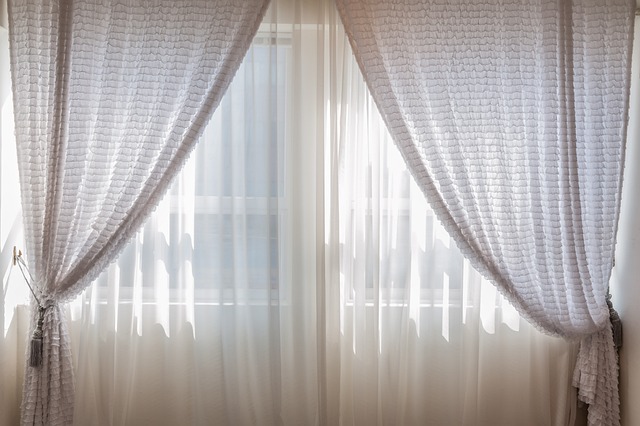
The Don’ts
- Don’t Go Too Narrow
Choose a curtain rod that is wider than the width of your window. As a result, the panels will have to always cover the window, leaving enough space for them to hang on either side. Additionally, the window appears much bigger than it actually is, fooling your eye. Go 8 to 12 inches wider than your window as a general rule.
- DON’T Go Too Short
Unless you use cafe-style curtains, the fabric should fall to the floor. They don’t look good and are like highwater pants for curtains. If you want a romantic feel, a little puddling (as seen in these various shots) can be nice, but if you don’t want to worry about them dragging and getting dirty, stop the fabric just before they hit the floor; a little less than an inch is good.
Common Curtain Questions
How Do I Hang Curtains Without Drilling?
Command hooks! If you really want to hang curtains but are unable to drill holes in your wall, this may not be the most elegant solution, but it may work.
Make sure you double check the weight of your rod and curtains and buy the larger command hooks that can take a heavier load. Everyone fears having their curtains fall on them.
You can also use a tension rod. They are merely rods that extend from the interior of one window frame to the other. Naturally, you would only be able to cover your actual window panes in this manner, but tension rods are a great and quick solution if you are desperate for privacy and cannot drill.
How Can I Hem Curtains Without Sewing?
While they are directly affixed to the rod, you can hem them!
To the desired length, fold and pin. Iron the hem after bringing your ironing board close to the window. Remove pins, use iron-on hemming tape. Done.
This brilliant blog post shows you exactly how to do it.
How to Hang Curtains from the Ceiling?
It’s actually very common to hang curtains directly from the ceiling, whether you’re using them to divide a room in your house with curtain panels or you simply want to hang them as high as you can.
You can use do any of the following:
simply mount your rod brackets to the ceiling instead of the wall (it should work in most cases)
use a curtain track
try this versatile curtain wiresystem from IKEA
So, How to Hang Curtains?
Your window can look more open and be accessorized with the right curtains. Drapes can let in or block light and give you the privacy you need in addition to enhancing your décor. P
You need to take a measurement, determine size and style, choose rods and hardware, install brackets, mount curtains/drapes on rods, hang curtains/drapes, and install tiebacks (optional).
Thank you for reading.
